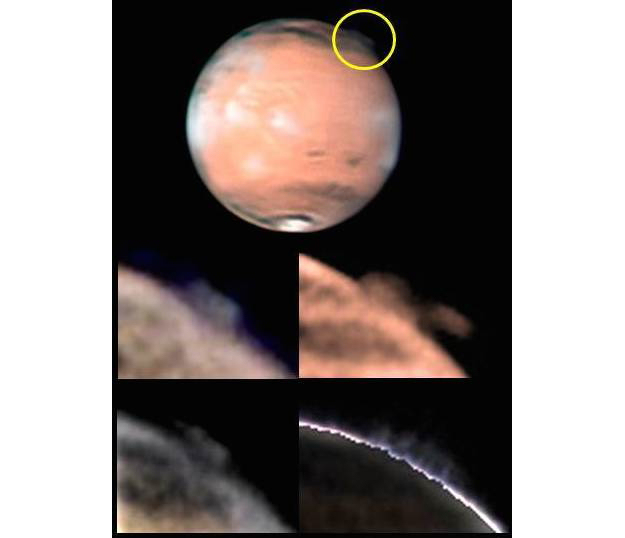
Scientists have been looking into the cause of a huge plume high above the surface of Mars.
Amateur astronomers first noticed the vast plume back in 2012, when it appeared in March and April before disappearing. They were bright and at extremely high altitude.
Now scientists have had some time to go over the images and according to a paper published in Nature they formed within a few hours and lasted around 10 days. The plumes were 500-1000km across and showed some daily cyclic behaviour.

Agustin Sanchez-Lavega of the Universidad del País Vasco in Spain, lead author of the paper, suggest the plumes could be particles of CO2 ice or H20 ice reflecting solar radiation, but far above the 100km region where clouds usually form. An alternative explantion is that there is an aurora over a region with an anomaly in the crustal magnetic field, though about 1000 times that of the Earth’s own aurora.

The scientists conclude that both the possible explanations for the plume "defy our current understanding of Mars’ upper atmosphere."

ESA's ExoMars Trace Gas Orbiter is due to launch in 2016, when it reaches Mars the scientists hope to shed further light on the plumes.


